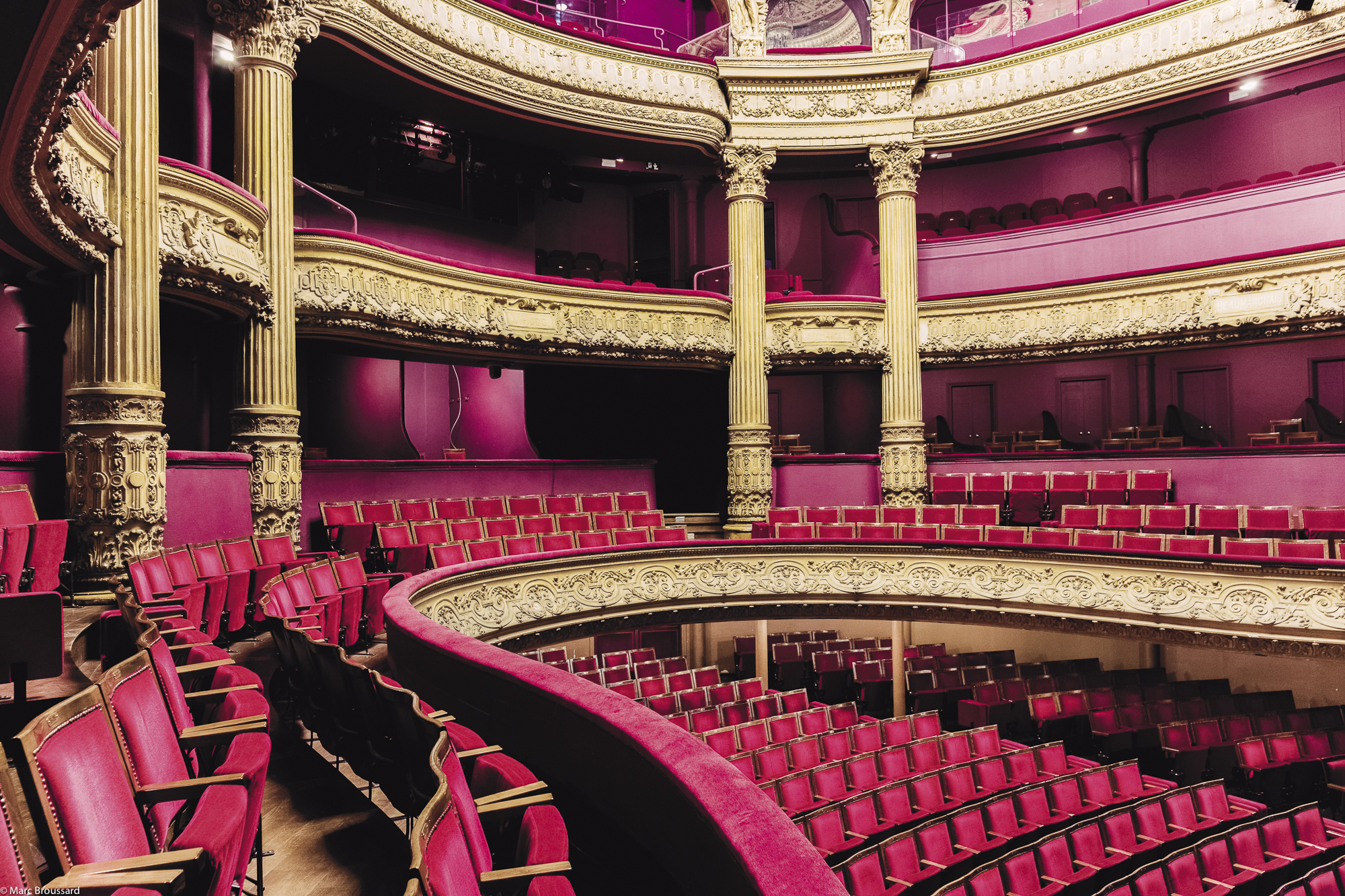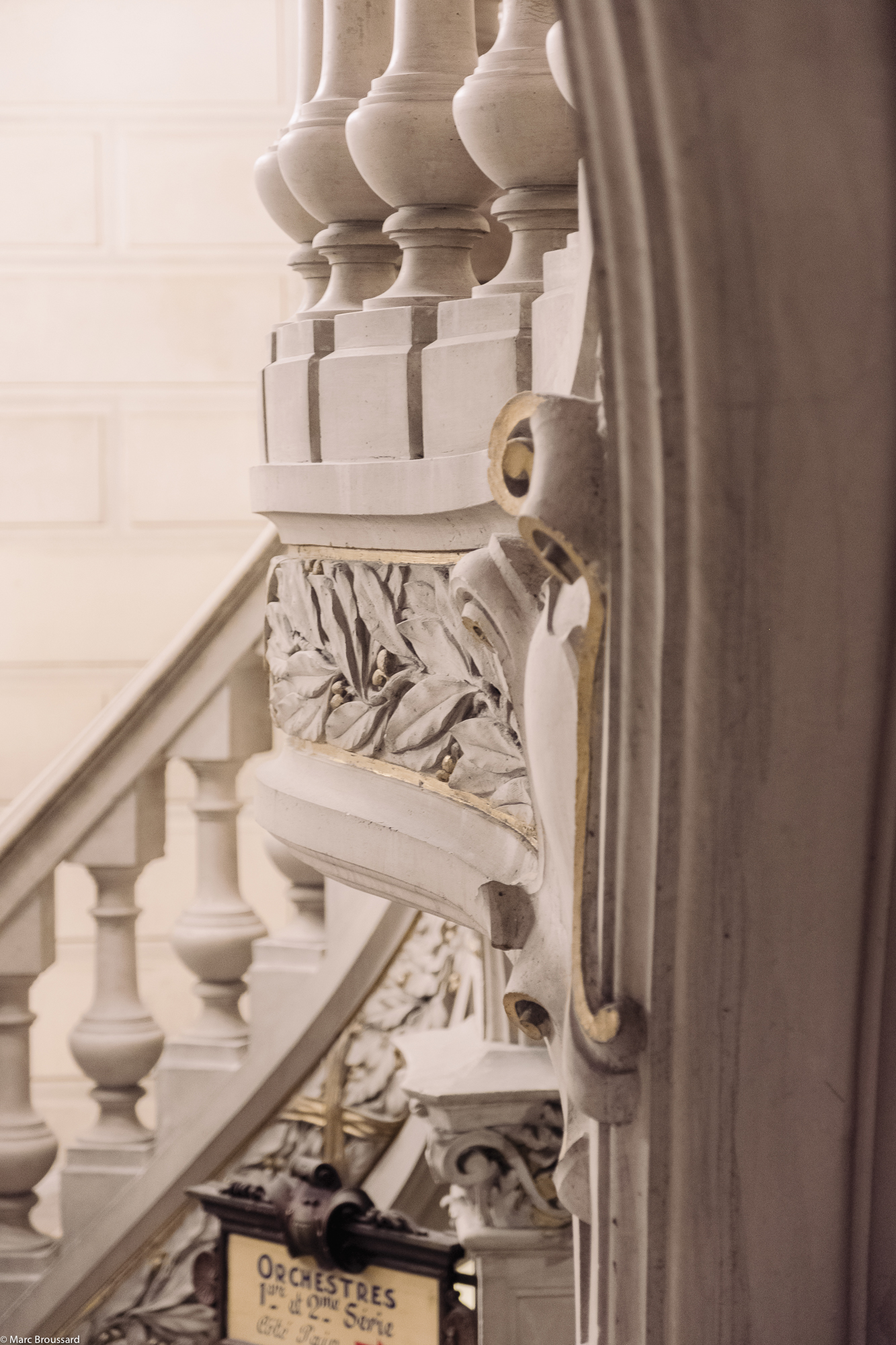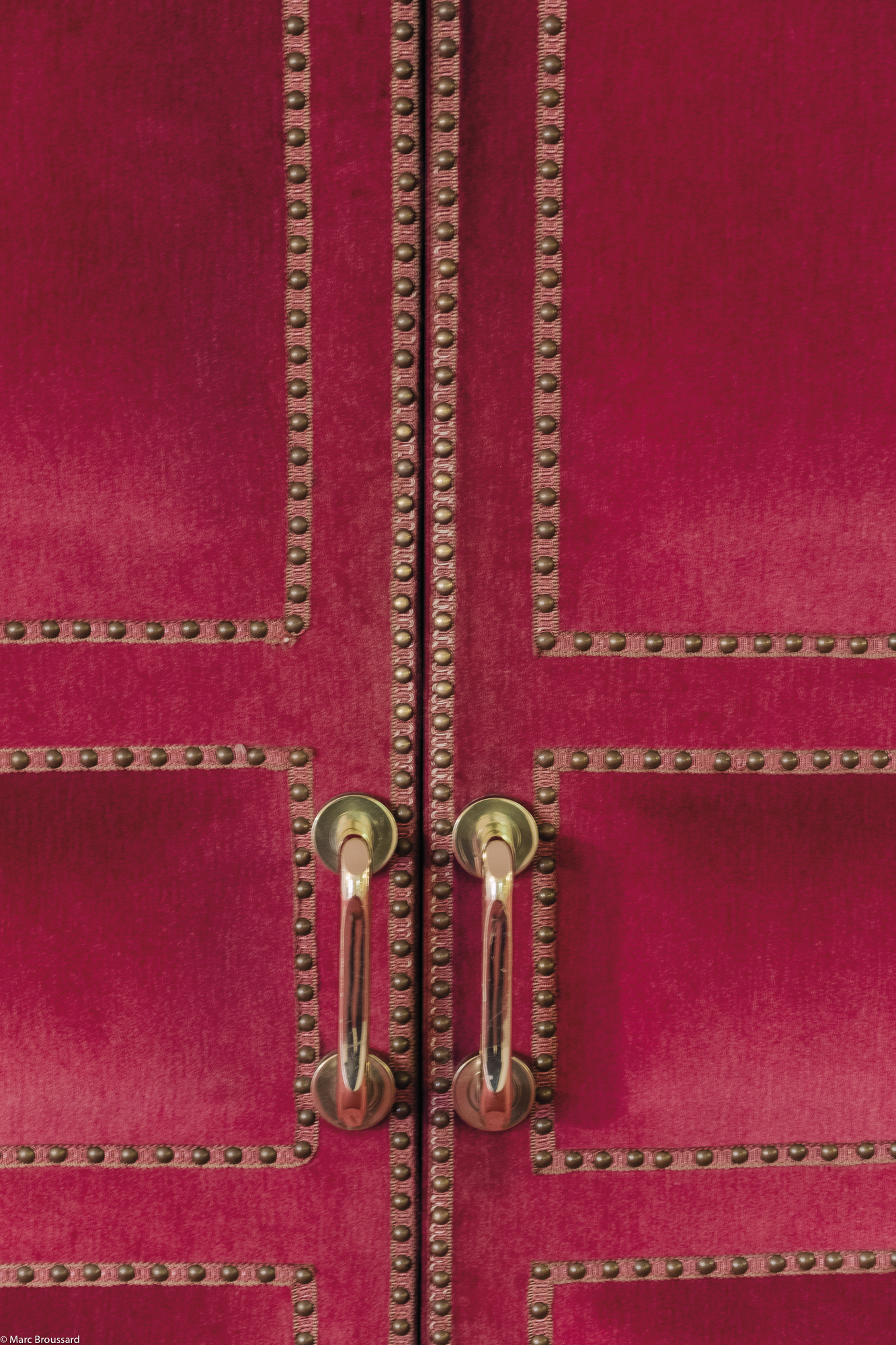
OPERA DE TOURS
Tours 2020
Grand Théâtre de Tours : le spectacle du temps
Vous ne connaissez peut-être pas l’histoire… il vous est arrivé de passer devant cet édifice majestueux inspiré de l’opéra de Charles Garnier, sans savoir. Derrière cette façade somptueuse, il n’y a pas que la beauté. Il y a les travaux d’architecte successifs, les comédies du temps, les joies du spectacle, le vrai, érigés en un temple italien. Il y a aussi le bruit des artisans qui s’affairent, petites mains aux grands talents, pour une levée de rideau sur l’après. Trois coups, coup de théâtre, coup de foudre. Aujourd’hui, vous poussez enfin les portes du Grand Théâtre de Tours.
Vous entrez. Quelle chance. Vous avez longtemps hésité à percer le mystère de cette façade qui règne en maître, rue de la Scellerie. Il faut dire que sa figure, longue de plus de cinquante mètres, est imposante. On imagine la fierté de l’architecte Léon Rohard, en 1872, lors de son inauguration. On imagine aussi le soulagement des Tourangeaux de voir ces murs subsister après l’incendie ravageur de 1883. Mais il ne reste qu’un visage sans corps quand un an plus tard, le jury d’un concours municipal, parmi lequel siège l’illustre Charles Garnier, élit François Hardion pour redonner sa splendeur à la salle de spectacle de la Ville de Tours. Ici naît l’idée d’un monde que vous allez découvrir en poussant les portes de ce monument.
Même si son œuvre sera achevée par Stanislas Loison en raison de dépassements budgétaires, Hardion aura eu le temps de bâtir un opéra majestueux. Un lieu de fête rendant grâce aux arts du spectacle, à la Danse, à la Musique, à la Tragédie. Peint par l’artiste Georges Clairin, le décor fait miroir aux heures de gloire de la Touraine. Un pied dans la Loire, on a aussi, ici, le cœur en Italie. L’opéra de Tours, c’est la tradition d’un théâtre à l’italienne où les colonnes en faux marbre et la symbolique des couleurs participent à l’illusion. Le ton est donné : ici votre esprit se laissera prendre au jeu.
Grand Theatre of Tours: The spectacle of time
Perhaps you don't know the story... you have passed by this majestic building inspired by the Charles Garnier opera house, without knowing it. Behind the sumptuous facade, there is more than just beauty. There is the work of successive architects, the theatre acts of the era, the pleasures of the authentic performing arts, put on in an Italian temple. There is also the noise of busy craftspeople, assistants to the great talent, for a later curtain call. Three times, a twist, love at first sight. Today, you can finally enter the Grand Theatre of Tours.
You can come in. What luck. You have waited for a long time to penetrate the mystery of the facade that reigns supreme in the rue de la Scellerie. It must be said that its look, more than fifty metres long, is imposing. One can imagine the pride felt by architect Léon Rohard at its inauguration in 1872. One can also imagine the relief of the people of Tours at seeing the walls survive the devastating fire of 1883. But all that remained was a face with no body when, one year later, the panel for a municipal competition, including the illustrious Charles Garnier, chose François Hardion to restore the City of Tours auditorium to its original splendour. That was the beginning of the idea for the world you can now discover upon entering the doors of this monument.
Even though his work would be completed by Stanislas Loison due to budget overruns, Hardion would have the time to build a majestic opera house. A celebratory space for giving thanks to the performing arts, Dance, Music, and Tragedy. Painted by artist Georges Clairin, the interior design shows the highlights of the history of the Tours region. With one foot in the Loire region, here we also have our heart in Italy. The Tours opera house is in the tradition of an Italian Theatre, where faux marble columns and the symbolism of colours help create the illusion. The tone has been established: here your mind will go with the flow.


Voyez ces escaliers monumentaux. Perdez-vous dans le rouge de la salle en forme de fer à cheval. Rêvez sous les anges musiciens habillant les plafonds de Clairin. Vous aurez un aperçu de la forme. Mais connaissez-vous le fond ? Entendez-vous les murmures des coulisses, juste derrière la scène, qui grimpent depuis plus de cent ans maintenant ?
Nous voici en 2020. Ce sont les bruits de ces artisans, permanents ou présents le temps d’un ouvrage, qui continuent à façonner le géant tourangeau. L’acoustique, ici, est exceptionnelle. Vous devez commencer à soupçonner ce qui se trame. Derrière les rideaux, ils sont plus de soixante à temps plein, souvent deux à trois fois plus quand approche le temps du spectacle. Dans cette « maison d’opéra », on fabrique les costumes, on habille les artistes, on fait bouger soi-même les décors. Chef couturière, machiniste-constructeur, chef cintrier, etc. Les métiers ont beau être méconnus, chacun sait ce qu’il doit faire. Créer, habiller, sublimer, divertir. Pour chaque ouvrage, c’est six mois à un an de préparation. Il y a aussi le chœur permanent, l’orchestre lyrique. Le Directeur de l’Opéra de Tours, Benjamin Pionnier, est aussi chef d’orchestre.
Seul opéra de la région, le Grand Théâtre de Tours est une sorte de « plaque tournante culturelle », nous explique Christine Beuzelin, élue à la mairie de Tours. Depuis son arrivée, celle qui a souhaité ouvrir l’opéra pour le faire découvrir au plus grand nombre se réjouit du rayonnement de ce joyau tourangeau. Concerts pour les tout-petits, privatisation des lieux pour des productions attirant Luchini, Grand corps malade ou Bénabar lisant Balzac, le Grand Théâtre vit et revit. Il tend ses bras à la Touraine, et bien plus encore. Il se modernise sans se trahir, joue le jeu du temps.
Il faudra bientôt refaire la façade, concède Christine Beuzelin. Le fond et la forme. Les tourangeaux y tiennent. On les comprend. Car rue de la Scellerie, sorti de ce mini Garnier, on en est intimement persuadé. « The show must go on ».
Gaze at the monumental staircases. Lose yourself in the red, horseshoe-shaped hall. Dream under the angelic musicians adorning Clairin's ceilings. You will gain an insight into the style. But do you know the content? Do you hear the whispers in the wings, just behind the stage, that come from more than one hundred years ago?
Here we are in 2020. It is the noise of these craftspeople, full-time or present for just one show, who continue to shape the giant of Tours. Here, the acoustics are exceptional. You will begin to suspect what is afoot. Behind the curtains, there are more than more than sixty full-time workers, and often two to three times more when a show is about to begin. In this "opera house", we create the costumes, dress the artists, and move the sets by ourselves. Head dressmaker, machinist-builder, front-house manager, etc. The trades may well be obscure, but each one knows what he or she has to do. Create, dress, enhance, entertain. Each work requires six months to a year of preparation. There is also the full-time choir, and the lyric orchestra. The Director of the Tours Opera, Benjamin Pionnier, is also the conductor.
As the only opera house in the region, the Grand Theatre of Tours is a sort of "cultural hub", explains Christine Beuzelin, a representative from the Tours town council. Since arriving, she has wanted to open the opera so that as many people as possible could enjoy this flourishing jewel in Tours. Concerts for the little ones, private bookings of the premises for productions drawing Luchini, Grand Corps Malade, or Bénabar reading Balzac, The Grand Theatre is something to be experienced again and again. It opens its arms wide to the Tours region, and beyond. It is modernising without betraying itself, playing the game of time.
Soon the facade will need to be renovated, concedes Christine Beuzelin. Style and content. The people of Tours are attached to it. We understand. Since upon leaving this mini Garnier in the rue de la Scellerie, one is deeply convinced. "The show must go on".
Texte: Catherine Taralon
Photographies: Marc Broussard
Traduction: David Winterstein